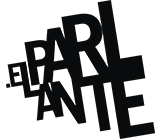By: Alfredo Cohen
Communicating is sharing. Communicating does not mean inoculating, selling, proposing or presenting ideas to other people. Truly communicating, communicating seriously is much simpler and at the same time more complex than the sender-receiver-message relationship we were taught at school. The communication in which we believe in elParlante is “an essential and inherent function of human nature, which goes far beyond mass media and includes horizontal and participatory processes through which two or more human beings share experiences, interests and feelings in person or remotely, helped by technology.” (Kaplún, 1998).
The communication style that we try to put into practice in our projects is one that translates into construction and circulation of senses, a polysemic category that includes different meanings of the social sciences and that in culturally heterogeneous contexts such as Catalan, must be linked to education, self-esteem, critical awareness, social norms, collective action, participation in the information society but also in everyday life and social cohesion.
Thus, we seek that our initiatives are inspired by Habermas’ communicative action, which he refers to as “the interaction of at least two subjects capable of language and action who (either verbally or through extraverbal means) establish an interpersonal relationship” (Habermas, 124: 1987).
The objective of awareness-raising projects, collective creation, as well as the socializations, training or research we carry out, is to discover beyond the devices, the technology itself or the transmission of massive information. We have understood from the beginning that communicative processes are a dimension of sociocultural processes. That is why we are interested in people and their discussions, their sensibilities, their ability to deliberate. We are interested in people in schools, neighborhoods, streets and institutions. Therefore, if communication is pooling, there is something above that is shared, something prior that allows participation and collaboration.
We would like to end this post by sharing two co-creation processes that we carry out in two very different scenarios: the Raval neighborhood in Barcelona and the municipality of Sabanalarga in the Colombian Caribbean. Both experiences share a work methodology and despite the difference in contexts, the results are similar: the generation of spaces open to positive interaction and the empowerment of young people to be informed, express themselves and debate on issues that affect them.
Making-of of the Ravalead@s TV project
Making-of of the Yamaró project
